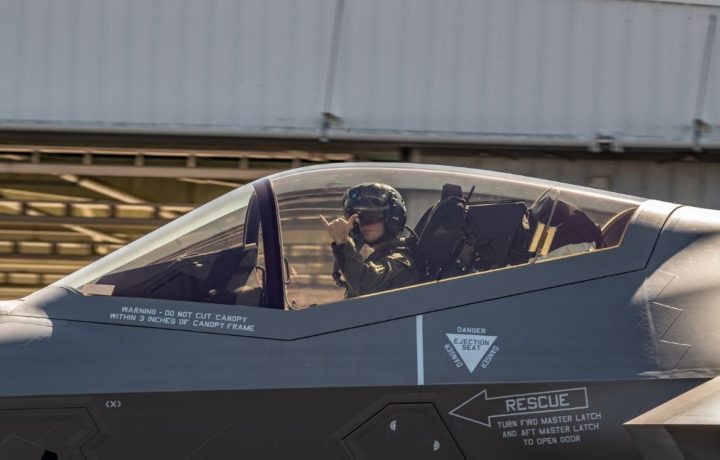How do you store a $100 million aircraft? That’s not a trick question, but something that Lockheed Martin executives are probably pondering as the United States Government Accountability Office (GAO) reported on Thursday that the aerospace and defense giant is running out of space to store its undelivered F-35 Lightning II fighters.
Though the fifth-generation stealth aircraft finally achieved full rate production in March, the jets are now piling up at Lockheed Martin’s Fort Worth, TX facility due to the fact that the Pentagon stopped accepting new F-35s last summer due to hardware and software delays with the Technology Refresh-3 (TR-3), a $1.8 billion enhancement that will provide new capabilities to the Joint Strike Fighter. It was supposed to be completed last July.
How many F-35s are there now completed but not yet updated isn’t known precisely, but it is a considerable amount, warned the government watchdog.
“We know for certain: It’s going to be at least over 100 aircraft stacked up o the tarmac,” Rep. Wittman (R-Virginia), chairman of the House Armed Services tactical air and land forces subcommittee, told reporters on Wednesday, according to a report from Defense One.
TR-3 Software Delayed – Will Impact Future Testing
TR-3 is now months behind schedule, with struggles to resolve technical issues hindering flight certification. The GAO’s independent auditors have reported that they do not expect the TR-3-configured Lightning IIs to be delayed until at least 2025.
The TR-3 shouldn’t be seen as a software patch that is installed on a computer or mobile device. Instead, it akin to a brand new operating system that was developed to substantially improve the fifth-generation fighter’s computing power, better computer memory, and improved cockpit displays. In addition, as the aviation trade magazine Flight Global also reported, there are separate efforts underway to upgrade the jet’s single engine as well as onboard power and cooling systems.
“These challenges, collectively, will delay the full delivery of TR-3 with new capabilities into 2025,” the GAO report made clear.
These issues are coupled with ongoing bugs in the radar and electronic warfare systems, with GAO further noting that some F-35 pilots have had to reboot those systems mid-flight.
The TR-3 update is required before additional in-depth upgrades, known as Block 4, could be installed on the F-35. The Block 4 enhancement will allow the multirole combat aircraft to carry additional weapons and be equipped with even more advanced electronic warfare capabilities.
Another concern is that the program has just four test F-35s – all more than a decade old. Four more test aircraft are in the works, but aren’t expected to be completed until 2026. The GAO noted that the planes will be regular F-35s, modified with after production instruments to allow them conduct basic developmental weapon tests.
Rolling Out F-35s to be Updated Later
For now, Lockheed Martin has aimed to roll out a less-capable “interim version” of the TR-3, with plans to do a upgrade after it is finalized and certified.
That interim Release 1 software could allow the U.S. DoD’s F-35 program to resume acceptance of the F-35.
Though not entirely related, this month, the House Armed Services Committee also released its proposed fiscal 2025 (FY25) National Defense Authorization Act (NDAA), which called for cutting 10 F-35s from the DoD’s proposed F-35 procurement. That would reduce the number of Lightning IIs to 58. House lawmakers have suggested it would save approximately $1 billion, with the funds going towards the TR-3.
Moreover, the bill would prevent the U.S. military from accepting 10 of those jets until the Pentagon is able to certify that the problem has been addressed.
Despite the hiccups, the F-35 program hit 1,000 aircraft produced – a number rarely reached by post-World War II aircraft. In addition to service with the United States Air Force, U.S. Navy, and U.S. Marine Corps, the F-35 has been – or will be – adopted by more than a dozen allies and partners around the world.




